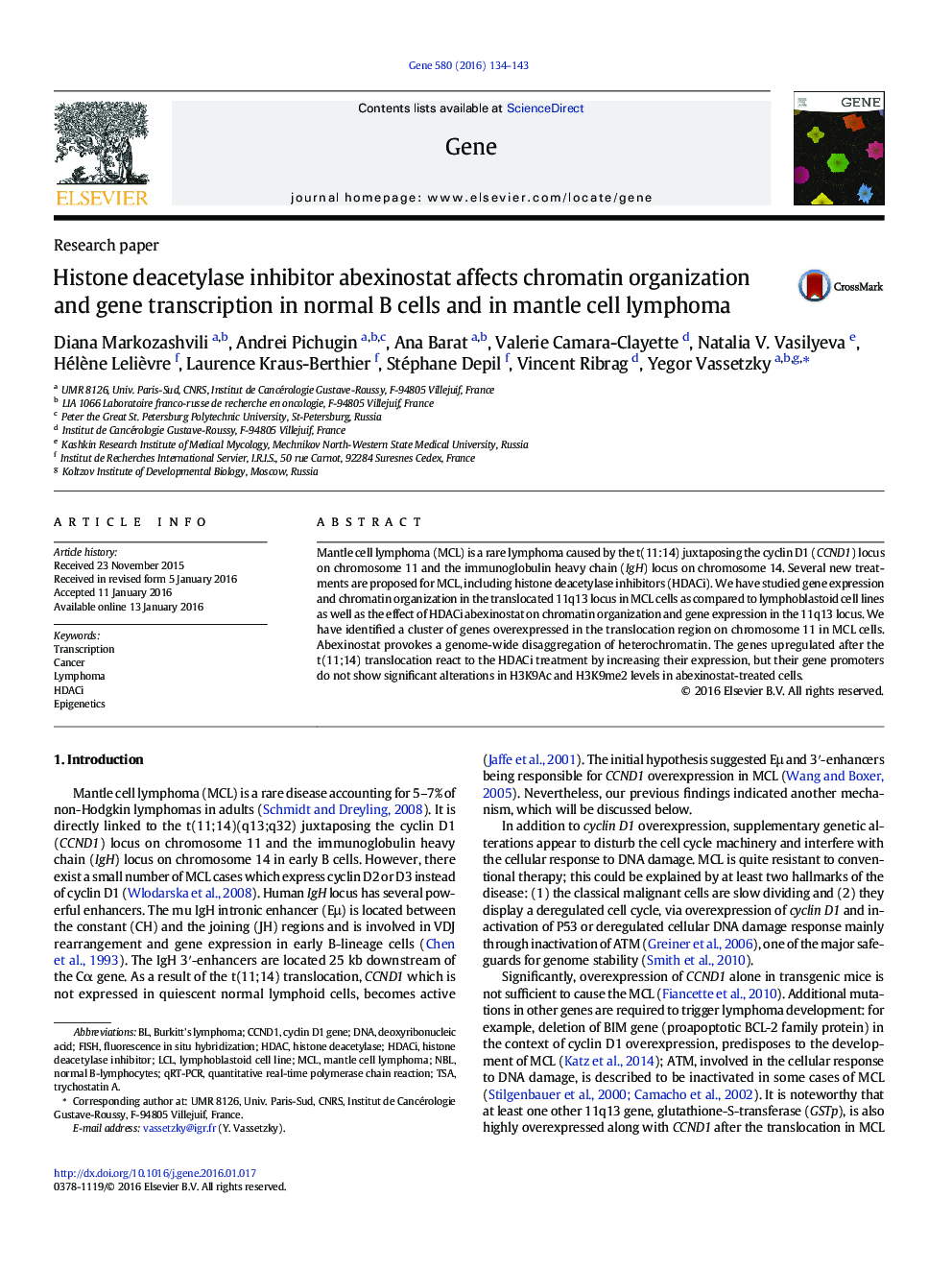| Article ID | Journal | Published Year | Pages | File Type |
|---|---|---|---|---|
| 2814941 | Gene | 2016 | 10 Pages |
•Translocation (11;14) leads to upregulation of a cluster of genes located on both sides of the translocation point.•H3K9 acetylation status of this locus is elevated as compared to the average genome acetylation level.•Abexinostat provokes a general heterochromatin disaggregationt, but only a small subset of genes reacts to the treatment.•Abexinostat-triggered effects on genes located in the t(11:14) translocation region had a non-epigenetic nature.•CD6, CD5, CTSF, and ORAOV1 are overexpressed in MCL; they can be considered as potential targets for MCL therapy.
Mantle cell lymphoma (MCL) is a rare lymphoma caused by the t(11:14) juxtaposing the cyclin D1 (CCND1) locus on chromosome 11 and the immunoglobulin heavy chain (IgH) locus on chromosome 14. Several new treatments are proposed for MCL, including histone deacetylase inhibitors (HDACi). We have studied gene expression and chromatin organization in the translocated 11q13 locus in MCL cells as compared to lymphoblastoid cell lines as well as the effect of HDACi abexinostat on chromatin organization and gene expression in the 11q13 locus. We have identified a cluster of genes overexpressed in the translocation region on chromosome 11 in MCL cells. Abexinostat provokes a genome-wide disaggregation of heterochromatin. The genes upregulated after the t(11;14) translocation react to the HDACi treatment by increasing their expression, but their gene promoters do not show significant alterations in H3K9Ac and H3K9me2 levels in abexinostat-treated cells.
